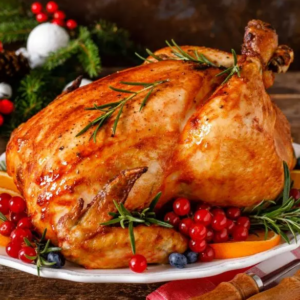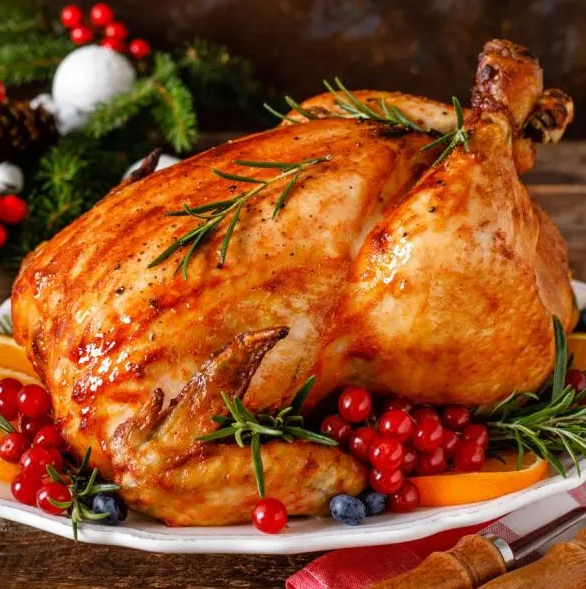Take your turkey out of the fridge to bring it up to room temperature an hour before the start of your cooking time. This is important as it allows the meat to relax after the coldness of the fridge which will in turn give you a much more tender roast.
Remove the giblets. You can use these for gravy but I'll cover that in a separate recipe.
Preheat oven to 190°C (170°C fan) 375°F, Gas Mark 5.
Put the quartered onion and a few bay leaves in the cavity between the legs. Pack half the stuffing into the neck end, pushing it in towards the breast.
Secure the neck skin in position with skewers and tie the turkey legs together at the top of the drumsticks to give a neat shape. Nothing like tying up a roast to make you feel like a professional!
Put a sheet of extra-wide foil in a large roasting tin then put the turkey on top. Smear the breast with the butter, sprinkle over half the nutmeg and season well.
Cover the breast with bacon, pour over the wine, then loosely bring up the foil and seal well to make a parcel. Please take care that the foil doesn't touch the skin of the bird if at all possible.
Into the oven goes the turkey to be left undisturbed until 90 mins before the end of cooking.
Open the foil, discard (or snack on…) the bacon and drain off excess fat from the tin.
Leaving the foil open and folded down, return the turkey to the oven to brown, basting with the juices every 20 minutes.
Life hack; buy yourself a turkey baster. You'll only use it once a year but it will make roasting the festive feast infinitely easier and more enjoyable.
30 mins before the end of cooking, place pigs-in-blankets around the turkey or you can roast them in a separate, lightly oiled, tin.
Transfer your turkey to a platter, cover loosely with foil and leave to rest in a warm place for 30 minutes before carving.
Resting is arguably the most important part of the process as it ensures the juices are absorbed into the meat making it far more tender to eat and much easier to carve.

